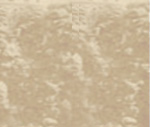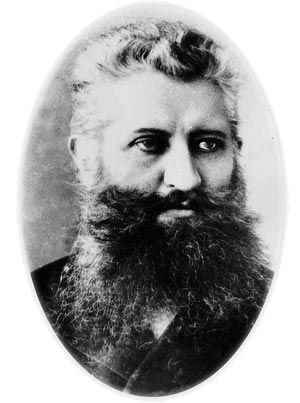 |
 |
 |
|
||
| main :: biography :: texts :: manuscripts :: photographs :: drawings :: squeezes :: publications :: about | ||
|
KARL KAZIMIROVICH KOSTSYUSHKO-VALYUZHINICH (1847 – 1907)
Necessary Foreword:
The story about the founder of the archaeological museum in Chersonesos Karl Kazimirovich Kostsyushko-Valyuzhinich permanently requires enraptured expressions from anyone who is writing it. He was the one who made the most important discoveries in Chersonesos and unearthed almost one third of the ancient city to enrich the State Hermitage Museum in Saint Petersburg with ancient art masterpieces and to supply the science with a huge array of material evidences from the past. His titanic labour that was rewarded with a multitude of finds, his fanatical devotion to the job entrusted to him, his key role in the establishment of the museum on the ruins of Chersonesos, all these merits were celebrated many times, during lifetime of Kostsyushko as well, and made this devotee a venerable figure, a legend, but, as a result, he has almost no real biography. Any attempt of compiling this person biography sees that the evidences from the “pre-Chersonesos” period are extremely small in number and fragmented. You are reading this small biographic essay that is an announcement of a wide-scale study of the life and labours of the founder of museum in Chersonesos. I continue working on his biography that will be published at these pages soon. The facts known for sure:
Karl Kazimirovich Kostsyushko-Valyuzhinich was born on April 20, 1847, in Mogilev, into a family of nobleman of Polish
origin who owned a small estate. He grew up in the family estate Novoye Selo (Russian for new village)
that was located very close to the modern Belorussian-Latvian border, on the right bank of Western Dvina, at the
estuary of Rositsa river *.
It was August of 1859, when the twelve-years-old son of
titular counselor
Having shown himself as a person of stainless honesty and accuracy in business, Karl Kazimirovich was elected deputy director of the City Bank of Sevastopol from January 1885, as well as a member and, later on, chair of the Council of Sevastopol Society for Mutual Loan. From 1885, K.K.Kostsyushko-Valyuzhinich was full member of the Imperial Odessa Society for History and Antiquities. He took a great interest in antiquity and edited Sevastopol’skiy listok: Karl Kazimirovich obviously felt too tight at the banker’s desk. According to the contemporaries’ accounts, doing archaeology was his cherished dream. It is known that Karl Kazimirovich even applied to the Imperial Archaeological Commission with request of being appointed to a vacancy of the director of Kerch Museum. Fortunately to Chersonesos, he was refused of this appointment. When, in 1888, the excavations in Tauric Chersonesos passed under supervision of the Imperial Archaeological Commission, K.K.Kostsyushko-Valyuzhinich, being recommended by the Vice President of the Odessa Society V.N.Yurgevich, became superintendent of the works and, later on, the head of the Warehouse of Local Antiquities, archaeological museum, built on the shore of Karantinnaya (Russian for ‘Quarantine’) bay by his insistence.
He occupied this position for almost 20 years; there he displayed his talent to most full extent and find application for his efforts and abilities. Kostsyushko-Valyuzhinich was the one who made large-scale excavations in the ancient city site to make it ‘Russian Pompeii.’ He uncovered residential quarters and streets, shops and workshops, public buildings (including the so-called mint) and richly adorned churches with mosaic floors, water supply system and fortifications of excellent state of preservation. Karl Kazimirovich also organized excavations outside Chersonesos: in vicinity of cape Fiolent and on the shore of Kazach’ya (Russian for ‘Cossack’) bay. Huge number of archaeological finds, the best of which were sent to the Imperial Hermitage Museum for ‘the Most High observation’, attracted czar family’s attention to Chersonesos. During the time of Kostsyushko-Valyuzhinich’s directorship, the excavation budget was raised from 2,000 to 10,000 rubles that made Chersonesos the largest archaeological enterprise in the Russian Empire. By 1892, Karl Kazimirovich Kostsyushko-Valyuzhinich was elected member of the Imperial Archaeological Commission, he was full member or correspondent member of many scholarly societies of the period, including Moscow Numismatic Society, Taurida Scholarly Archive Commission, and others. Large-scale excavations of Chersonesos contributed to the development of the science studying antiquities to the most full extent. K.K. Kostsyushko-Valyuzhinich’s labours made it possible to publish the books by D.V.Aynalov, Razvaliny khramov (Ruins of churches), V.V.Latyhev, Inscriptiones antiquae orae Septentrionalis Ponti Euxini, and many other volumes, of the same importance. The following excerpt from the memoirs of Karl Kazimirovich’s contemporary, S.P.Shestakov, brilliant scholar and author of Ocherki po istorii Khersonesa v VI – X vekakh po R. Kh. (Essays for the history of Chersonesos from the sixth to tenth century AD), draws vivid portrait of the founder of Chersonesos museum: …Utterly devoted to his work, this modest worker in his secluded residence on the deserted shore, where busy life of the Greek trading city had been in full swing in former times, was uncovering material and written monuments of its past, step by step; excavations were made under his incessant control and according to his plan to bring very important and unpredicted results. But not only large finds, like the discovery of the ancient Greek city walls below the soil level of the latest Chersonesos, or cross church that was unearthed in 1902, attract attention to his activities as the guardian of the excavations on the site of ancient Chersonesos. The most valuable thing is that he did not see trifles in his beloved labour. Every shard of ancient glazed pottery, every unprecedented fragment of domestic or church utensil from pagan or Christian Chersonesos told him much, due to his many-years-long experience in the work of studying antiquities of Chersonesos, and immediately found its place in this or that section of the small museum on the site of the ancient city ruins, where he collected and classified, with so much care, artifacts of antiquities of Chersonesos from different periods. I remember my acquaintance with affable and sympathetic master of the excavations in Chersonesos in summer 1903, when I succeeded to use him as a guide in examination of the monuments in Chersonesos, I remember his vivid and fascinating word of Chersonesos and its antiquities, that was on his tongue all the time during our conversations either on the sea shore or in Kostsyushko-Valyuzhinich’s small study near his child, his museum of Chersonesos, that was never empty, and its often visitors always met with Kostsyushko-Valuzhinich’s readiness to explain antiquities. It was apparent that this person all lived in his historical and archaeological interests and could not keep them in secret from the people around him. Only few evidences survived concerning Kostsyushko-Valyuzhinich’s private life, because his family archive was lost. It is known that he belong to Roman Catholic religion, he was married to Orthodox Maria Pavlovna and had seven children: three sons (Pyotr, Pavel and Dmitriy) and four daughters (Lubov’, Yelizaveta, Maria and Kseniya). From time to time, his life became very hard: all that harmed Chersonesos he perceived as his personal drama: building of monastery houses and laying out flowerbeds, construction of artillery batteries on the city site. He struggles as he could, but there also was a struggle against him: one of the abbots wrote denunciations on him, accusing him as a catholic of being a witting enemy to the Orthodox hermitage; the chair of the Archaeological Commission count A.A.Bobrinskiy explained him that the interests of the Military Department are more important than archaeology; venerable scholars, who visited Chersonesos transiently, criticized his excavations as ‘conducted without any definite plan’ and the system of keeping exhibits in the museum. Karl Kazimirovich accurately added all such documents to the files with a note ‘For the future student of the museum in Chersonesos.’ Karl Kazimirovich Kostsyushko-Valyuzhinich died on December 14, 1907 in Sevastopol, in Red Cross Hospital, of pneumonia. He was buried in the monastery in Chersonesos, as his necrology put it, ‘by Catholic and Orthodox clergy together.’ His grave with tombstone of inscribed marble column fragment survived in the territory of the National Preserve of Tauric Chersonesos. It is located at the alley leading to the sea.
K.K.Kostsyushko-Valyuzhinich’s scholarly heritage composes large collection of archive materials (more than 5,000 holdings units): manuscript reports for the Archaeological Commission, field journals, photographs and drawings that document excavation routine, correspondence with leading scholarly institutes. Until now, materials from Kostsyushko-Valyuzhinich’s scholarly archive are a source for studying history and archaeology of Tauric Chersonesos. The most interesting part of this archive is published on the pages of this web-site. © L. Grinenko B i b l i o g r a p h y
Antonova, I. A. Osnovatel’ Khersonesskogo muzaya (The founder of Chersonesos museum). Krymskiy arkhiv 3 (1997): 57-67. Grinevich, K. E. Sto let khersonesskikh raskopok (1827-1927) (One hundred years of the excavations in Chersonesos [1827-1927]). Sevastopol, 1927. Makhov, I. I. K. K. Kostsyushko-Valyuzhinich (k godovshchine yego smerti) (K. K. Kostsyushko-Valyuzhinich [to the anniversary of his death]). Krymskiy vestnik 290 (14 December 1908).
Rot, V. N. K. K. Kostsyushko-Valyuzhinich. Manuscript, in the Scholarly Archive of the National Preserve of Tauric Chersonesos, file no. 137.
* I would like to thank cordially the student of local lore from Verkhnedvinsk (Republic of Belorussia) Anton Frantsevich Bubolo, who set up for a special expedition to Novoye Selo village, the place where the Kostsyushko-Valyuzhinichs family estate had been located, in order to take the pictures of |
| ©National Preserve of Tauric Chersonesos . 2007 - 2025 |



